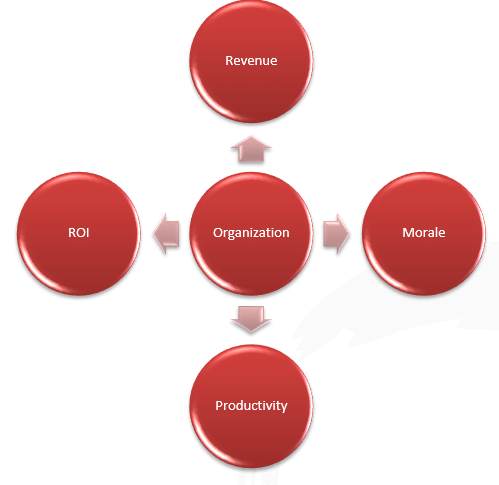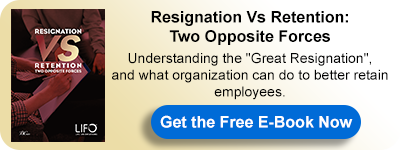How are High Turnover Rates Impacting Companies ?
Employees are the main company’s asset. Therefore, when turnover rates spike, most organizations suffer over several aspects.

Impact on Revenue
Employee turnover has a direct impact on the revenue and profitability of a company. According to the magazine “Organization Science,” the cost of a lost employee earning $8 per hour at a retail chain shop ranges from $3,500 to $25,000. Hiring costs, worker training, lost revenue, and productivity are all factors that contribute to this. Depending on the sector, employee position, and compensation, the revenue impact can be considerably more significant.
If a severance package is paid, it is a non-return on investment expense. Consider the labor costs associated with putting classified ads, assessing applicants, interviewing, and training management personnel. Even if some businesses use a job-placement agency, it is still a cost. Additional costs are incurred due to reduced productivity or a dwindling consumer base.
Impact on Workplace Morale
Employee morale can be affected by a high turnover rate. This could result from overworked personnel who have been given higher duties and responsibilities due to a lack of a skilled or engaged workforce. New hires are not exempt. They, too, maybe experience poor morale as they try to grasp new job responsibilities and processes.
If this work atmosphere is maintained, the organization may have difficulty attracting and retaining high-quality employees.
Impact on Productivity
A disruption in daily operations due to an overall low number of employees or inexperienced staff without sufficient training might result in lower productivity and subpar quality of work. This is especially true in businesses where familiarity and repetition are more important than innovation.
New hotel clerks, for example, may not deliver excellent customer service since they are inexperienced with the company’s policies. This might express itself in instances as simple as issuing refunds for faulty snack vending machines. Although it may appear to be a minor issue, it could significantly impact client satisfaction.
Impact on ROI
Even if marketing expenses remain constant to attract new customers, the return on investment is reduced if the company is losing repeat customers and customer recommendations due to unskilled employees or lower-quality products. As a result, the cost of a one-time customer rises, diminishing marketing ROI.
Will All companies Suffer from High Turnover?2
According to a March survey by the National Federation of Independent Businesses, 42% of businesses are having trouble filling job opportunities. That was four months ago, and the bustling summer season has since begun.
Similarly, according to an Achievers survey from 2021, more than half of employees (52 percent) plan to look for new jobs as a result of the pandemic. When you consider that the Society for Human Resource Management estimates that a business’s average pre-pandemic turnover rate is under 20%, this is an unacceptably high percentage.
However, not every business will experience a surge in turnover this year. In truth, some companies have very nothing to be concerned about in this regard. This is what those groups have been up to the entire time.
Soliciting Feedback
Employees want their bosses to listen to their feedback and embrace it, push for it, and take action based on it. Leaders that effectively listen to their staff have more significant business results. According to a study, when employees feel heard, engaged, and have a strong sense of belonging, their firms are significantly more likely to perform well financially (88 percent).
Building Trust
As we are in 2022, it is essential to build trust. Trust is a critical ingredient for today’s organizations, where it is earned from both sides; organizations, and employees. A workplace without trust is very costly and directly impacts employee’s attrition (24%) of employees left because they did not feel trusted. Trust affects Employees’ mental health (55 percent), career choices (58 percent), and sense of belonging (64 percent).
Providing Autonomy
Organizations that have been providing their staff with autonomy all along aren’t concerned about the impending turnover tsunami. Employee autonomy can take many different forms.
Employees in some organizations may be given opportunities for career and personal development. Others may equip employees with the tools they need to balance work and personal obligations. Employees may feel empowered to make a difference in their communities because the company allows them to volunteer during work hours.
1Chron, 4 Feb 2019, Miki Markovich, The Negative Impacts of a High turnover, Accessed 1 Dec 2021, https://smallbusiness.chron.com/negative-impacts-high-turnover-rate-20269.html
2Forbes, 2 Aug 2021, Christopher Mullen, PhD, A ‘Turnover Tsunami’ Won’t hit every company, Accessed 1 Dec 2021, https://www.forbes.com/sites/forbescoachescouncil/2021/08/02/a-turnover-tsunami-wont-hit-every-company/?sh=2a11749a6126
For more about this topic, download our latest book "Resignation Vs Retention: Two Opposite Forces" for FREE:
